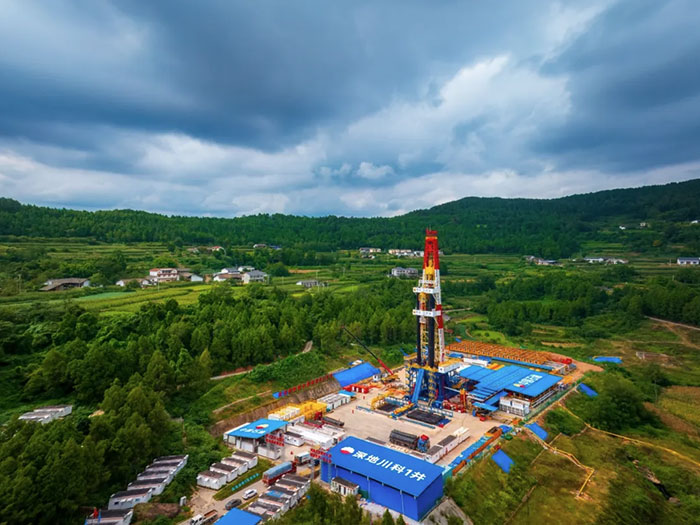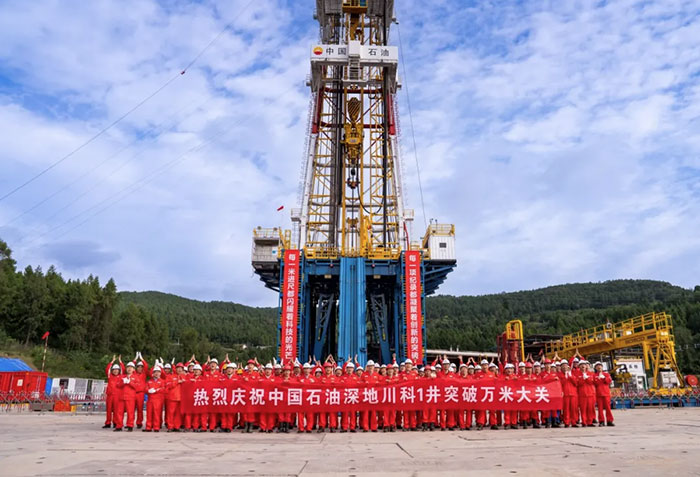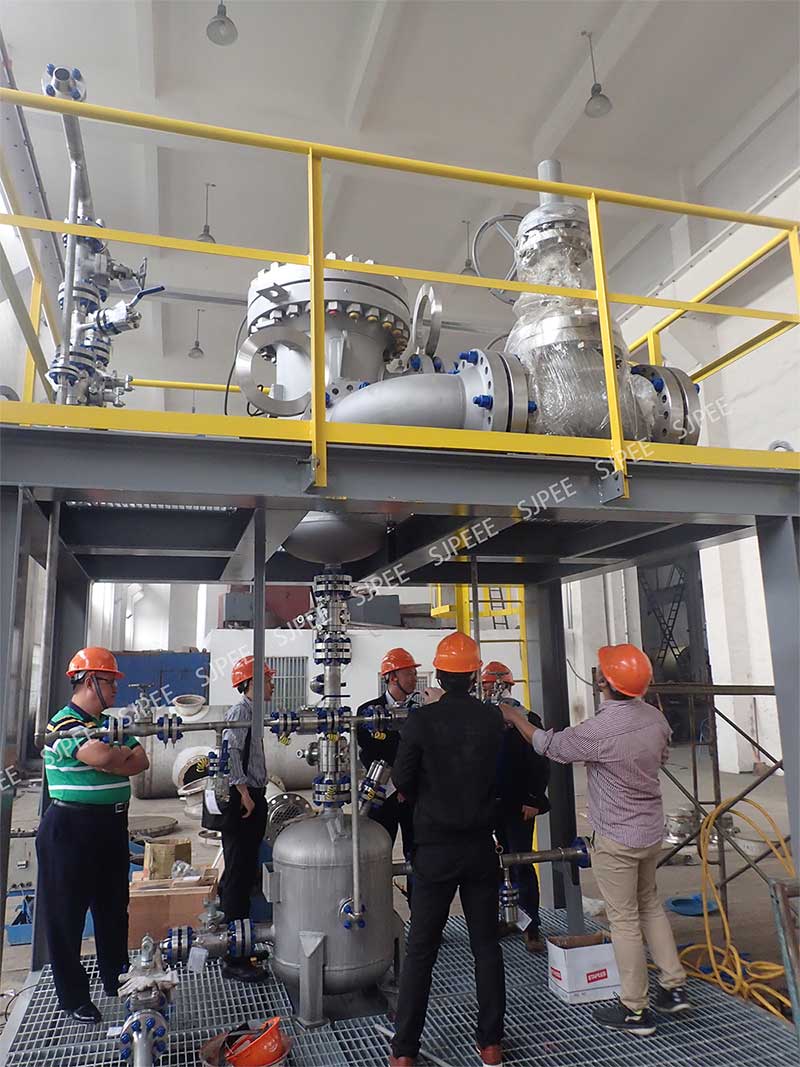
On October 15, according to an official announcement from Southwest Oil & Gas Field, at 9:16 a.m., the drilling depth of the Shen Di Chuan Ke 1 well exceeded 10,000 meters. This deep-earth "super project," recognized as the most geologically complex and technically challenging drilling operation in the world, has already penetrated 23 stratigraphic layers. It has now reached the Sinian strata dating back 540 million years, venturing for the first time into the unexplored "no-man's land" deep within the Sichuan Basin. This achievement marks a critical step forward in China's exploration of energy resources in the Earth's deep interior.
The Shen Di Chuan Ke 1 well commenced drilling in July 2023. As the first 10,000-meter scientific exploration well in the Sichuan Basin, it shoulders major missions including exploring uncharted territories in geoscience, forging critical national capabilities for deep-earth endeavors, and establishing a hub for pioneering technologies in oil and gas exploration and development.
During its journey towards the 10,000-meter depth goal, the Shen Di Chuan Ke 1 well has already achieved two major oil and gas discoveries. It identified thick beach-facies dolomite reservoirs in the Longwangmiao Formation of northwestern Sichuan and discovered ultra-deep platform-margin high-quality dolomite reservoirs in the Dengying Formation. These findings have expanded new large-scale reserve growth areas in the Sichuan Basin and revealed the region's broad exploration prospects.
The Shen Di Chuan Ke 1 well has set seven world records for technical difficulty, making it the most challenging ultra-deep well globally in terms of drilling operations. From a geological perspective, the well entered completely unexplored strata below 7,000 meters – an operation often described as "blind drilling," as if working with eyes covered. In terms of engineering, downhole temperatures exceeding 200° Celsius cause metal drilling tools to become "as soft as noodles," making every additional meter drilled extremely difficult. In the context of oil and gas exploration, conventional theory holds that formations below 8,000 meters, with their extreme heat and pressure, are unlikely to host reservoirs and have long been considered no-go zones for exploration.

Dr. Sun Jinsheng, an academician of the Chinese Academy of Engineering, once offered this analogy for ultra-deep oil and gas exploration: "Searching for oil and gas in ultra-deep layers beyond 8,000 meters is like standing on the summit of Mount Qomolangma and trying to spot a tourist boat on the Yarlung Zangbo River."
The challenges are particularly formidable in the Sichuan Basin. As China's most gas-rich basin, it leads the country in both natural gas resources and production, yet possesses an exceptionally complex geological structure. Taking the Shen Di Chuan Ke 1 well as an example: with a planned depth of 10,520 meters, it must penetrate 25 stratigraphic layers, including sections with a drillability rating exceeding Level 10 – a rarity both domestically and globally.
Focusing on full-chain technological breakthroughs in deep-earth drilling and completion, PetroChina has established multiple major scientific and technological programs, forming ten comprehensive technical systems that cover the entire process. These projects have overcome critical "bottleneck" technologies and successfully developed more than ten key technological tools, including 15,000-meter intelligent drilling rigs, measurement-while-drilling instruments, and high-temperature-resistant oil-based drilling fluids—all reaching internationally advanced levels. This progress has enabled the initial formation of a technical roadmap for deep-earth engineering drilling and completion, significantly enhancing China's international competitiveness in oil and gas exploration and development.

The extraction of oil and natural gas cannot be achieved without desanders.
Shanghai Shangjiang Petroleum Engineering Equipment Co., Ltd. established in Shanghai in 2016, is a modern technology enterprise integrating R&D, design, production, and service. We are dedicated to developing separation and filtration equipment for the oil, gas, and petrochemical industries.
Our high-efficiency product portfolio includes de-oiling/dewatering hydrocyclones, desanders for micron-sized particles, and compact flotation units. We provide complete skid-mounted solutions and also offer third-party equipment retrofitting and after-sales services. Holding multiple proprietary patents and operating under a DNV-GL certified ISO-9001, ISO-14001, and ISO-45001 management system, we deliver optimized process solutions, precise product design, strict adherence to engineering specifications, and ongoing operational support.
Our high-efficiency cyclone desanders, renowned for their exceptional 98% separation rate, have earned recognition from international energy leaders. Constructed with advanced wear-resistant ceramics, these units achieve 98% removal of particles as fine as 0.5 microns in gas streams. This capability enables the reinjection of produced gas for miscible flooding in low-permeability reservoirs, a key solution for enhancing oil recovery in challenging formations. Alternatively, they can treat produced water, removing 98% of particles larger than 2 microns for direct reinjection, thereby boosting water-flood efficiency while minimizing environmental impact.
Proven in major global fields operated by CNOOC, CNPC, Petronas, and others across Southeast Asia, SJPEE desanders are deployed on wellhead and production platforms. They provide reliable solids removal from gas, well fluids, and condensate, and are critical for seawater purification, production stream protection, and water injection/flooding programs.
Beyond desanders, SJPEE offers a portfolio of acclaimed separation technologies. Our product line includes membrane systems for natural gas CO₂ removal, deoiling hydrocyclones, high-performance compact flotation units (CFUs), and multi-chamber hydrocyclones, delivering comprehensive solutions for the industry's toughest challenges.
Post time: Nov-04-2025
